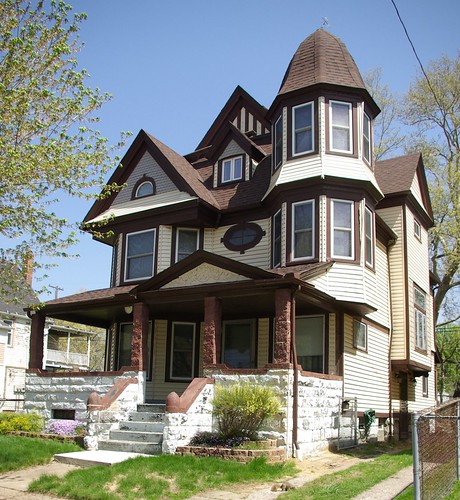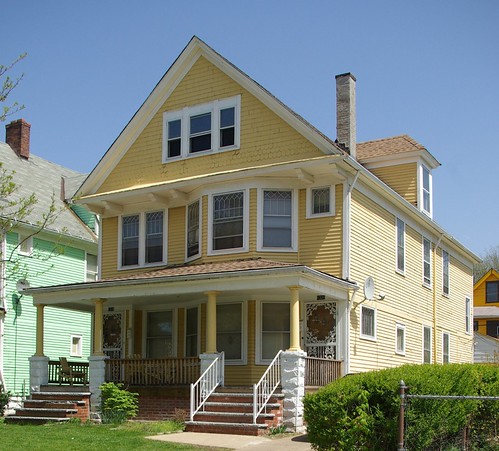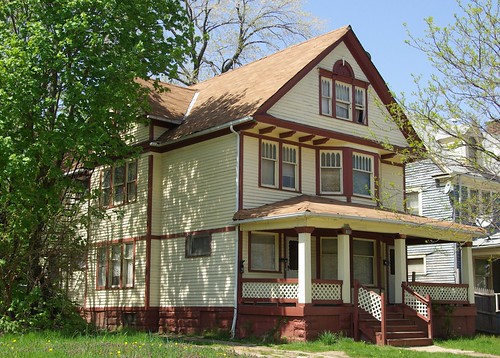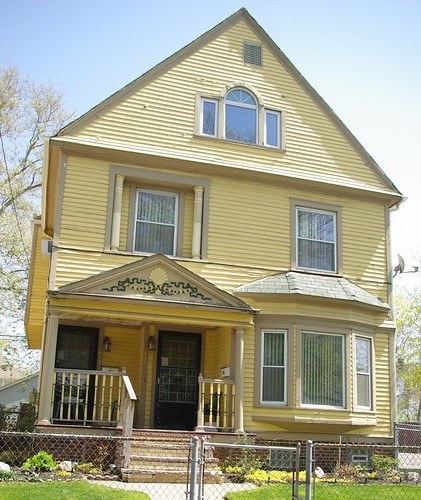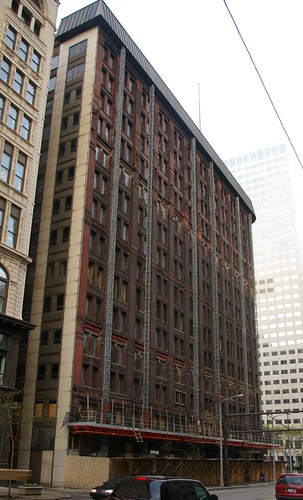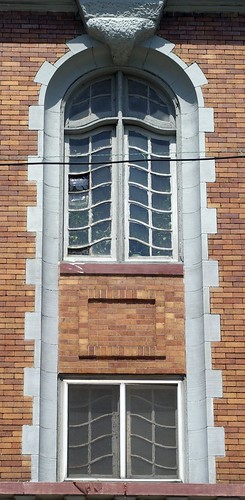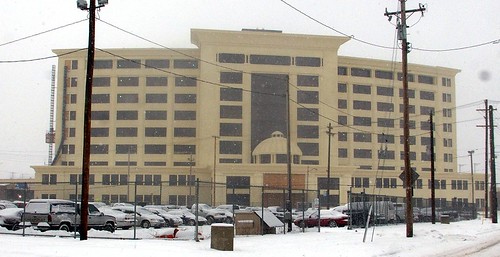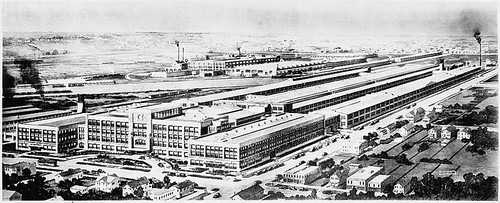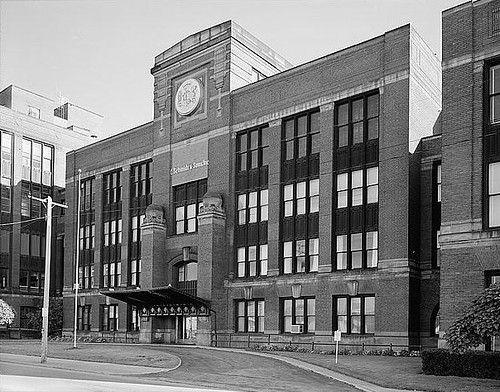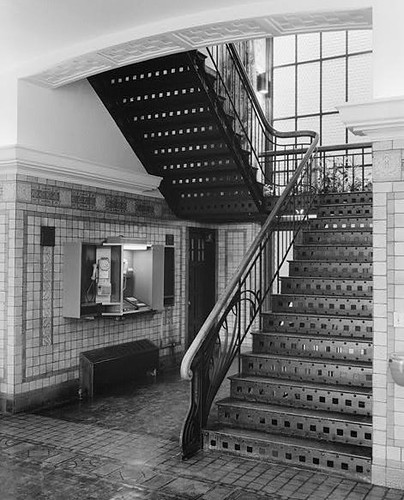Thomas Ott reported in the
Plain Dealer on May 5, 2010, that the Cleveland Metropolitan School District plans to demolish 25 buildings. With one exception, these are school buildings that are or will no longer be in use. (The exception is the Woodhill Quincy administration building.)
The population of the city of Cleveland has declined considerably from its peak, and as a result, they simply do not need as many school buildings as they used to. Which specific schools were chosen is an issue best addressed elsewhere by those more familiar with the issue.
According to Mr. Ott's article, five of the schools will be rebuilt on the existing sites. These include the Cleveland School of the Arts, Dunbar, and Orchard. The remaning 20 lots will likely be offered for sale.
There are also several surplus buildings Mr. Ott identifies that will be offered for sale as-is. I will address those structures in a future article.
In the past couple days, I've photographed most of the schools on the list. I hope that this provides some idea as to the visual character of the properties that our community will be losing. Those I've been unable to photograph, I've linked to photographs elsewhere.
The architects responsible for the strucures have been noted, when possible. It is also noted when a structure is a Cleveland Landmark, or if a structure has been nominated for Landmark status and the application is pending.
Phase I
Alexander Hamilton
3465 East 130th Street
Built 1928. George Martin Hopkinson, architect.
This school has some truly wonderful
architectural detail. It seems a true shame that it hasn't been maintained, and that it hasn't been properly secured, allowing further damage to occur to the property.
Almira3380 West 98th Street
Built 1916. Walter McCornack, architect.
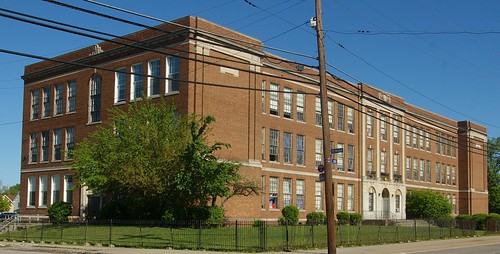
Charles Dickens
3522 East 131st Street
Built 1927. George Martin Hopkinson, architect.
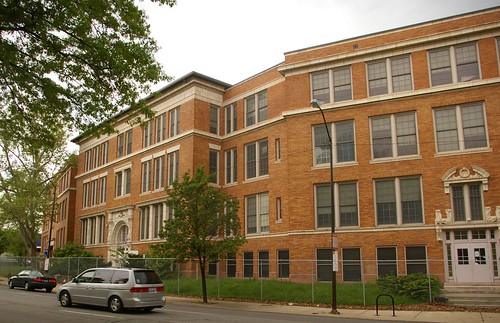
Cleveland School of the Arts
2064 Stearns Road
Built 1901.
The
terra cotta on this building is some of the most impressive architectural detail on any of the Cleveland schools. It is also home to one of my favorite pieces of public art in Cleveland, this 1998
mural by Mark Howard. Here are
more photos of the structure. This is one of the schools that will be rebuilt.

Louis Pasteur
815 Linn Drive
Built 1959.
This school, while not as ornate as some, still has good lines. It has a
main entrance on Linn Drive.

Miles
11918 Miles Avenue
Built 1912. Third floor added 1918. Rear wing added 1971.
This is another school that, while likely in poor condition, has suffered due to a failure to secure the property. This includes both the original building, and the
1971 addition.
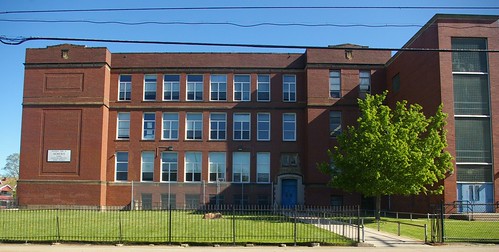
Mount Pleasant
11617 Union Avenue
Built 1913. Frank Seymour Barnum, architect.
Third story addition, 1918. Walter McCornack, architect.
Mount Pleasant features an interesting, if perhaps not quite so grand as some others,
entrance facing East 116th Street. It also includes a later
brick addition.
Orchard4200 Bailey Avenue
Built 1962.
Orchard was one of several schools built quickly and to a low standard during the 1960s. It is set to be replaced by a new building. I hope, at the very least, that the
wrought iron fence designed by artist Brinsley Tyrrell, which surrounds the playground and garden, can be saved.
Paul L. Dunbar2200 West 28th Street
Built 1965.
Dunbar, also built during the 1960s, has suffered similar structural issues to Orchard. It is also set to be rebuilt.
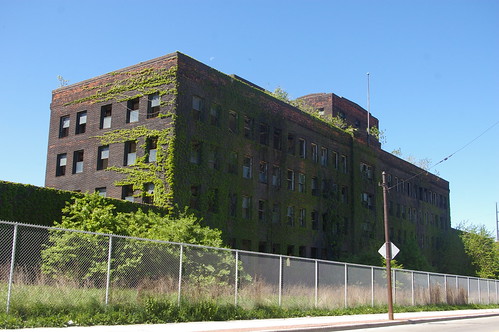
Woodhill Quincy administration center
10600 Quincy Avenue
Built 1921. Hubbell and Benes, architects.
This structure, built for National Malleable Castings, served as an administration center for a time. It has long been vacant and is in deteriorated condition.
Phase II 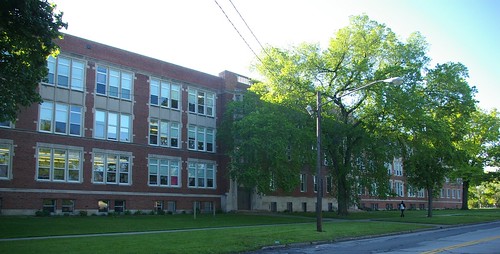
Audubon
3055 Martin Luther King, Jr. Drive.
Built 1922. Walter McCornack, architect.
This school features Gothic revival details, including around the
doorways.
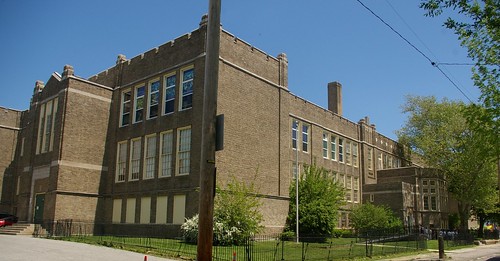
Empire CompuTech
9119 Parmalee Avenue
Built 1915. Walter McCornack, architect.
Landmark application pending
Councilman Michael Polensek called this structure "A magnificent building." He added that "It's one of the true gems in the system." It posesses significant
architectural detail.
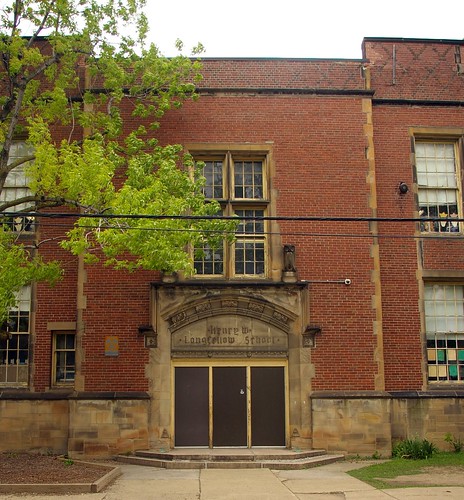
Henry W. Longfellow
650 East 140th Street
Built 1924. Walter McCornack, architect.
Landmark application pending
This school, with its heavily wooded front lawn, faces East 140th Street. The owls over the doorway look out onto the sidestreets. The
rear wing and smokestack are especially impressive.
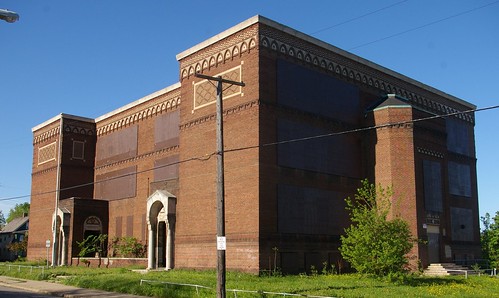
Mount Auburn
10110 Mt. Auburn Avenue
Built 1922. Walter McCornack, architect.
Cleveland Landmark
This school, with its
arched doorways is both a community and city landmark.
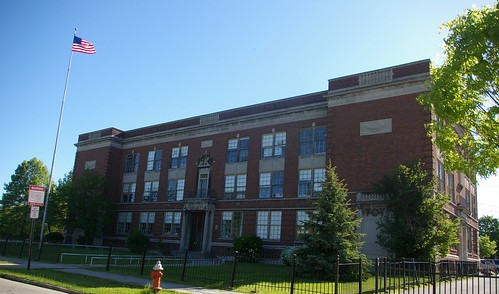
Robert K. Fulton
3291 East 140th Street
Built 1929. George M. Hopkinson, architect.
Cleveland Landmark
This school, in the Mount Pleasant neighborhood, appears on the exterior to be in good condition. A
later addition shares some detail with the original.
 Image used courtesy of the Cleveland Memory Project, Cleveland State University
Image used courtesy of the Cleveland Memory Project, Cleveland State UniversityWatterson-Lake [unused section]
1422 West 74th Street
Built 1906. Frank S. Barnum, architect.
Cleveland Landmark
The unused section that is referred to here is the entire old wing. This would be especially difficult to repurpose as it is physically attached to the school building. I've elected to use this historical image as vegetation makes it difficult to see the school right now.
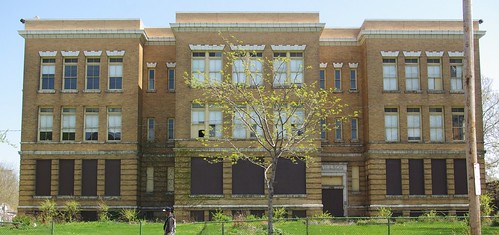
Willson
1625 East 55th Street
Built 1903. Frank S. Barnum, architect.
Cleveland Landmark
Willson was named for the street it faced, before the 1905 renaming changed it to East 55th Street.
Phase III 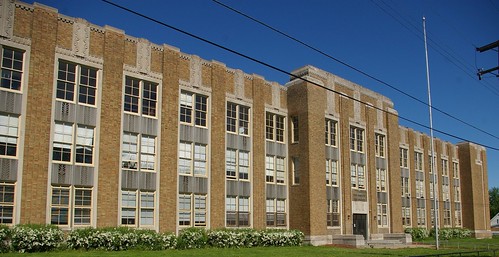
Albert B. Hart
3901 East 74th Street
Built 1932. George Martin Hopkinson, architect.
Albert Hart is one of my personal favorite structures on the demolition list. The art deco details
around the main entrance are especially noteworthy. Also of interest are the metal panels between floors separating the windows.

Forest Hill Parkway
450 East 112th Street
Built 1967.
The
Forest Hill Parkway campus features two round buildings overlooking a massive expanse of green. It appears to be a well designed structure, one that could be repurposed by another party that wanted to take advantage of the great location.
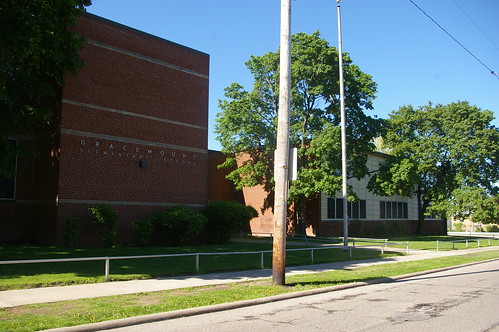
Gracemount
16200 Glendale Avenue
Built 1947.
The most notable feature of
Gracemount is
this multi-colored glass block wall.
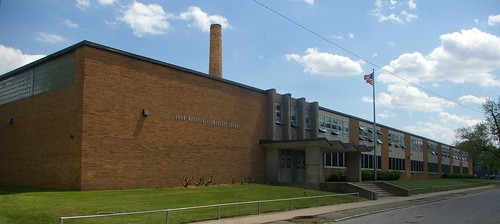
John W. Raper
1601 East 85th Street
Built 1963.
John W. Raper is the only one of these schools that I've been inside. While possessing limited architectural detail, it appears to be a solid structure that might be easily reused by another party.
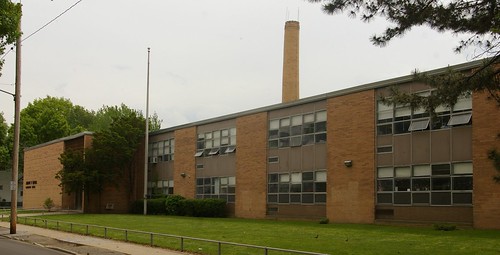
Joseph F. Landis
10118 Hampden Avenue
Built 1963.
This structure may likely have similar issues to some of the other structures erected by the CMSD in the 1960s.
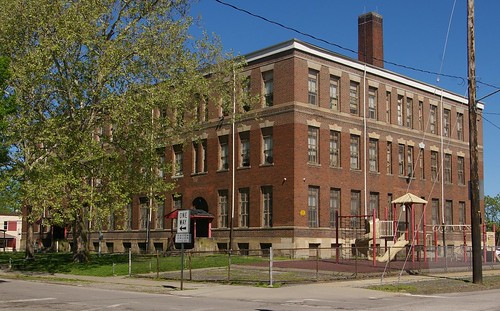
Mound
5405 Mound Avenue
Built 1904. Frank Seymour Barnum, architect.
This school was built on the site of a prehistoric earthwork, which I covered
a while back.
Phase IV 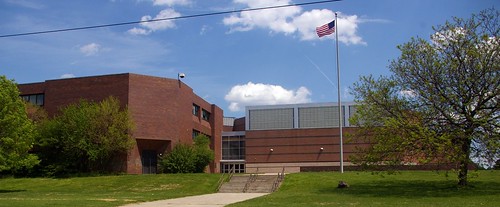
East High
1349 East 79th Street
Built 1975.
This structure, as work of the time goes, isn't that bad. Further, it's on a 13 acre site, which ought to be quite an asset.

Kenneth W. Clement
14311 Woodworth Road
Built 1976.
This school is an
interesting structure.

South High
7415 Broadway Avenue
Built 1968.
As with East High, one of the big advantages of South High is large lot that it was built on.
It is hard to fault the Cleveland Metropolitan School District for demolishing the schools that are to be rebuilt. The state requires that if the estimated rehabilitation cost exceeds 75% of the cost of new construction, that a new building must be built. This is because, as you surely know if you've ever fixed up an old building, costs are always higher than estimated. The school is in a difficult financial situation, and can't afford to give up the state portion of the funding for these projects. If we find this to be problematic, we need to work for change at the state level.
For the 20 schools that will not be rebuilt, the CMSD will spend $4.2 million dollars on demolition, about a third of the cost. The state will pay for the other two thirds. This works out to $210,000 per school.
Many of the schools need considerable work to be safe and healthy learning environments. I don't dispute that. As
these assessments show, many of them haven't received the maintenance that they need for years. However, there are many ways that they could be reused that don't require the expense that the state sets for new learning environments.
CMSD Chief Operating Officer Patrick Zohn has stated that the buildings will be demolished so that they don't become eyesores and so that the land can be redeveloped. Have we not learned this lesson from our downtown, where parcels were assembled for redevelopment, only to end up as surface parking? Even if the district has to spend $150,000 on each of these buildings to get someone to take it, they still come out ahead.
Further, at the very least, there needs to be a comprehensive architectural salvage plan. Many of these buildings posess great exterior detail. Further, due to the lack of maintenance, they have often retained many of the original interior fixtures - this includes marble-lined bathrooms in several of the schools. Salvaging the material and reselling it, likely through a third party, would offset the cost of the demolition.
There are plenty of great buildings here, buildings that could be reused in any number of ways. Later in the week, I'll address one of these. We can't simply assume that the best use of these properties is as vacant land. Some probably are too far gone to be useful. This doesn't mean, however, that they should all be bulldozed without a good faith effort being made to find new owners for them.















